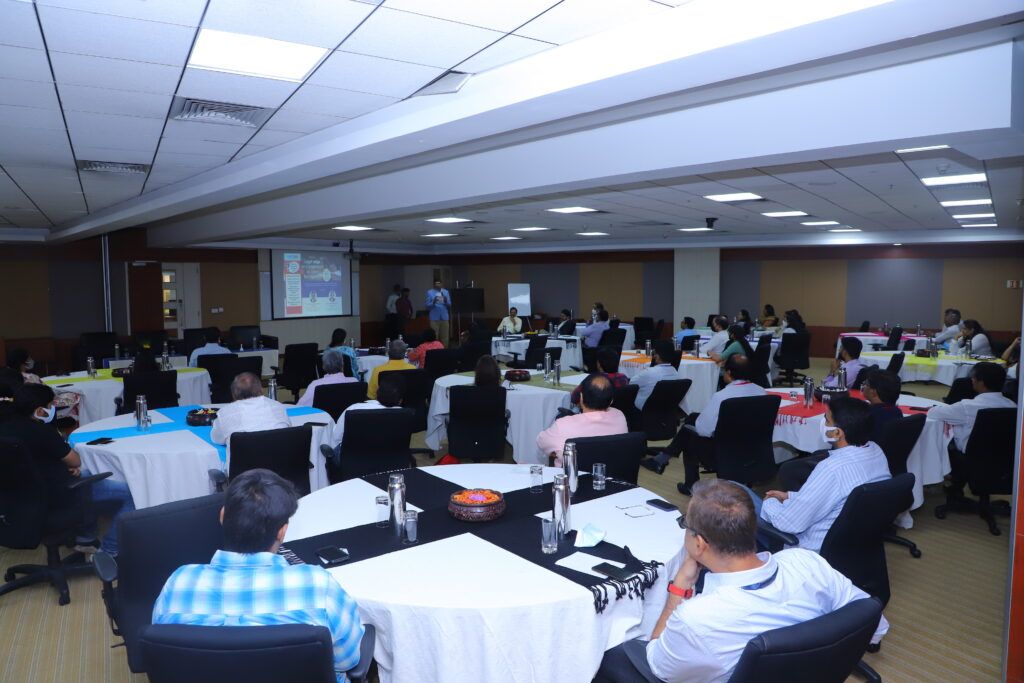13th April 2022, Tech Mahindra Learning Centre
In the last few quarters, we have seen the hiring in IT Industry hitting an all-time high. The Industry attrition has also hit a new peak. Some companies are experiencing attrition rates upwards of 25%. Average Compensation and Salary Hikes being offered appeared to have doubled in many cases. While hiring, compensation & attrition are driven by the demand for talent and supply chain dynamics, of late we are seeing an increasing trend of unethical/unprofessional/ non-compliant practices on employees’ and employers’ part that may also have legal ramifications for both.
In this context, HYSEA organized a workshop on Legal Edge on complexities in Talent Management with experts Mr. Radha Krishna Murthy, Advocate & Corporate Legal Consultant, and Mr. Ashok Ram Kumar, Founder and Managing Partner of Wordict-IP®, on 13th April 2022 at Tech Mahindra Learning Centre. They helped create the requisite high-level legal awareness among HYSEA members and helped them to navigate the talent and IP challenges better.
Summary (Covers employment contracts and practices to follow)
- Have a clause to hold some money back and pay it only after completion of a certain time in employment. This is proposed to improve the rate of joining. Can create a Systematic Investment Plan (SIP) with employees which can be used as an employee engagement strategy.
- Include an arbitration clause in the appointment letter/offer letter to reduce the period of litigation.
- Include a clause that says after agreeing to join (this agreement constitutes a binding contract) if the person doesn’t join, then legal action can be initiated against the person.
- Have separate employment letters. Make it a policy to give an offer of employment and appointment letter. In the offer of employment include a clause to recover opportunity loss/damage cost clause (ex: equivalent to 1-month pay if the candidate does not report.)
- Frequently reinforce the key clauses in the employment contracts by way of updates. Ensure the employees read the same and confirm their acceptance. Large companies do this. Small/medium companies can follow this as a best practice.
- If someone violates the notice period clause and leaves early or absconds, don’t hesitate to enforce the contract by taking the legal route. And publicize such exercises internally to deter other employees. File an arbitration suit because the trials will be faster. You can set an example to other employees if someone indulges in unethical exit practices.
- Follow ethical and legally complying hiring/termination processes. Do not resort to poaching employees and tacitly encouraging them to break contracts with other employers. Follow all the joining procedures normally. Insist on relieving letter, experience certificate, etc. Be diligent to follow the PIP process & while seeking a resignation. Conduct counseling, documenting the proceedings to ensure fairness. Any shortcut may show the employer in a weak position. It could be challenged in Labour courts.
- The termination notice period for both parties (employer-employee) should be the same.
- If you suspect an employee to be engaged in multiple jobs / moonlighting, check PF records / Income tax 26AS to verify. It is okay to ask the employee to furnish the 26AS report.
- The employer has every right to ask the employees to return to work.
- Employers wanting to implement hybrid working models should revisit their terms of employment and protect themselves. Ex gave in the talk: Employee who had incurred damage while working from home.
- Employers can have different salary structures based on the location of work status. Ex: Different pay for wfh and office.
- Write an agreement (before an employee joins) that protects you in case the employee brings stolen IP/data/source code from his / her previous employer and inadvertently uses it in the course of the job in your company.



